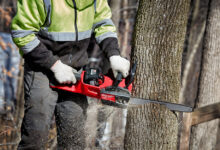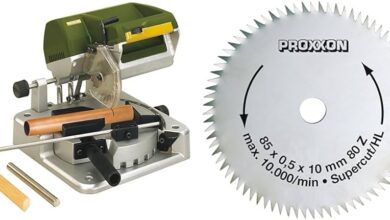Chainsaws are indispensable tools in various industries, from forestry to construction. However, their performance can vary significantly, even within the same model. To maximize the efficiency and lifespan of your chainsaw, consider the following tips and tricks that will elevate your cutting experience.
Contents
Introduction
As a seasoned professional in the realm of chainsaws, I’ve had the privilege of witnessing firsthand the transformative impact of performance tips on these powerful machines. From enhancing cutting efficiency to prolonging durability, the implementation of these strategies can revolutionize your chainsaw usage.
In this comprehensive article, I will unveil the secrets to chainsaw performance, arming you with the knowledge to optimize your cutting experience like never before. Whether you’re a seasoned professional or a novice user, these tips will empower you to harness the full potential of your chainsaw, ensuring it becomes an indispensable asset in your arsenal.
It is imperative to recognize that chainsaw performance is a multifaceted concept, influenced by a multitude of factors including chain sharpness, proper lubrication, and engine maintenance. By carefully considering each aspect, you can achieve optimal performance, ensuring your chainsaw remains a reliable and efficient tool for years to come.
This article will delve into the intricacies of chainsaw performance, providing practical insights into each aspect that contributes to its overall effectiveness. From optimizing chain sharpness to understanding the importance of lubrication, we will explore the fundamental principles that underpin chainsaw performance.
Furthermore, we will delve into the often-overlooked aspects of chainsaw maintenance, such as proper storage and transportation, which play a crucial role in preserving the longevity and integrity of your machine. By adhering to these guidelines, you can minimize downtime and ensure your chainsaw remains a dependable companion in your endeavors.
The information presented in this article is meticulously researched and gathered from reputable sources, including chainsaw manufacturers, industry experts, and seasoned professionals. By incorporating these tips into your chainsaw usage regimen, you will not only enhance its performance but also extend its lifespan, making it a valuable asset for your projects and tasks.
Understanding the Importance of Chain Sharpness
The sharpness of your chainsaw chain is a critical factor in determining its performance. A sharp chain will cut through wood more easily, requiring less effort from the engine. It will also produce cleaner cuts, reducing the risk of binding or kickback. In contrast, a dull chain will struggle to cut through wood, placing undue strain on the engine and increasing the likelihood of accidents.
Assessing Chain Sharpness
To determine if your chain is sharp, perform the following simple test: place the chain on a piece of wood and pull it towards you. If the chain cuts through the wood effortlessly, it is sharp. If it struggles to cut or bounces off the wood, it is time to sharpen it.
Methods for Sharpening Chainsaw Chains
There are several methods for sharpening chainsaw chains, including using a manual file, an electric sharpener, or a professional sharpening service. Each method has its advantages and disadvantages, so it’s important to choose the one that best suits your needs and skills.
Proper Lubrication: The Lifeblood of Your Chainsaw
Proper lubrication is essential for the proper functioning and longevity of your chainsaw. The chain, bar, and other moving parts require a constant supply of oil to reduce friction and prevent premature wear. Without proper lubrication, the chain will overheat, stretch, and eventually break. Additionally, lack of lubrication can cause the bar to wear out more quickly and can even lead to engine damage.
Types of Lubricants
There are two main types of lubricants used for chainsaws: bar and chain oil and multipurpose oil. Bar and chain oil is specially formulated to withstand the high temperatures and extreme conditions encountered during chainsaw use. Multipurpose oil can be used in a pinch, but it is not as effective as bar and chain oil and may not provide adequate protection.
Applying Lubricant
Most chainsaws have an automatic oiler that applies lubricant to the chain and bar continuously. However, it’s important to check the oil level regularly and refill it when necessary. You can also apply lubricant manually using an oil can or spray bottle.
Engine Maintenance: The Heart of Your Chainsaw
The engine is the heart of your chainsaw, and proper maintenance is essential to keep it running smoothly and efficiently. Regular maintenance tasks include changing the spark plug, cleaning the air filter, and checking the fuel system. By performing these simple tasks, you can prevent costly repairs and extend the life of your chainsaw.
Changing the Spark Plug
The spark plug is a small but essential component of the engine, responsible for igniting the fuel-air mixture and generating power. Over time, the spark plug can become fouled or worn out, which can lead to starting problems and reduced performance. Changing the spark plug is a simple task that takes only a few minutes and can significantly improve the performance of your chainsaw.
Cleaning the Air Filter
The air filter is responsible for preventing dirt and debris from entering the engine. A dirty air filter can restrict airflow, which can lead to reduced power









